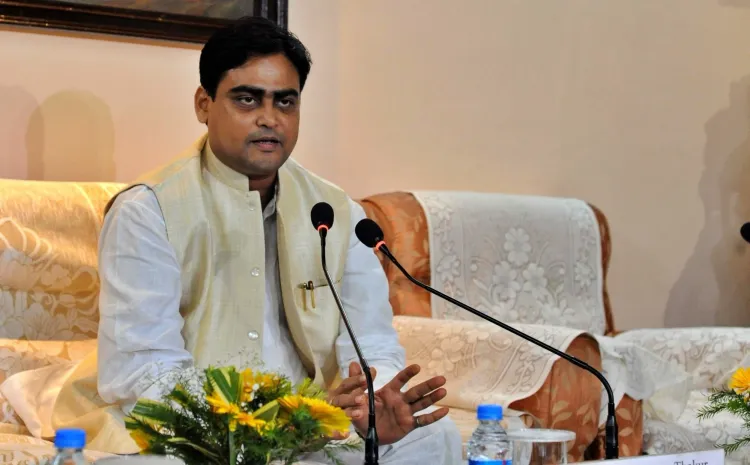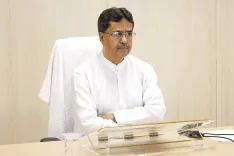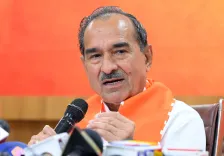Will the PM Gati Shakti Plan be Key to Achieving the 'Viksit Bharat Vision 2047'?

Synopsis
Key Takeaways
- PM Gati Shakti Plan is vital for achieving a developed India by 2047.
- Inland waterways have increased from 5 to 111.
- Development of ports enhances economic activities.
- Logistics cost has significantly decreased to 7.8–8.9% of GDP.
- India's rank in Logistics Performance Index improved.
New Delhi, July 3 (NationPress) Union Minister of State for Ports, Shipping, and Waterways, Shantanu Thakur, stated on Thursday that the PM Gati Shakti National Master Plan is set to be instrumental in realizing the vision of a developed India by 2047.
During a media interaction at a PHDCCI event in the national capital, the minister underscored the essential role of ports in the nation's economic advancement.
“Ports serve as fundamental enablers of progress, as they enhance the speed of economic activities,” he remarked.
Thakur further elaborated on the event discussions, highlighting that inland waterways were a significant focus area.
“In the past, India had only five inland waterways. Currently, we have expanded this number to 111, and efforts are underway to enhance this further,” said Shantanu Thakur.
The enhancement of these waterways, he emphasized, will not only facilitate more efficient goods transport but will also promote tourism across the country.
Minister Thakur noted that the central government is swiftly developing port infrastructure, which encompasses not only the ports but also industrial parks and dedicated freight corridors.
These initiatives are part of a broader strategy aimed at refining logistics and strengthening India's trade potential.
He mentioned that the development of ports will significantly contribute to realizing Prime Minister Narendra Modi’s vision of ‘Vocal for Local’, by improving the accessibility of Indian products in international markets.
Dr. Surinder Ahirwar, a senior official from Indian Railways, commended the PM Gati Shakti Master Plan, referring to it as the most cohesive infrastructure development effort by the government.
He observed that it has markedly benefitted critical sectors like agriculture and manufacturing.
A recent analysis by the National Council of Applied Economic Research (NCAER) revealed that India’s logistics costs have fallen to approximately 7.8–8.9 percent of GDP, down from earlier estimates of 13–14 percent.
This decline is a strong indication of the effectiveness of the Gati Shakti initiative.
The report also highlighted that India’s position in the World Bank’s Logistics Performance Index improved from 44th in 2018 to 38th in 2023, indicating positive progress.







